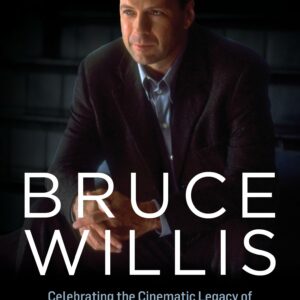In the glittering pantheon of rock ‘n’ roll greats, few names command the same reverence as Tina Turner. Known the world over as the “Queen of Rock ‘n’ Roll,” Turner’s presence on stage was volcanic—an explosion of voice, charisma, and raw emotion that moved entire stadiums. Her career, which spanned over five decades, is not just a story of musical achievement, but a chronicle of defying the odds, shattering expectations, and carving out a place in history that no one before her had ever occupied. In the process, Turner redefined the possibilities for female artists, Black artists, and indeed, for the very essence of what rock and soul music could achieve.
Trailblazer in Music: A Revolution in Sound
Tina Turner’s career began in the late 1950s, a time when the music world was more segregated than it would care to admit. Her early success with Ike Turner and their band brought her into the spotlight, but it was her solo career in the late 1970s and 1980s that elevated her to an untouchable status in the music world. In a field largely dominated by male performers, Turner not only held her own—she towered above many.
Her sound was a seamless blend of genres: the deep grooves of R&B, the fire of rock ‘n’ roll, the passion of gospel, and the smoothness of pop. In combining these influences, Turner transcended conventional boundaries, making her music appealing to a broad audience. Songs like “Proud Mary,” “River Deep – Mountain High,” and “What’s Love Got to Do with It” are not just rock standards—they are blueprints for how diverse musical traditions can come together in perfect harmony. Turner wasn’t just a singer; she was a musical force, capable of transforming any song into a thunderous anthem of soul.
Her crossover success—both as a Black woman and as an artist who straddled multiple musical genres—was a monumental achievement. It was especially groundbreaking considering the times. When rock ‘n’ roll was still perceived as the domain of white male performers, Turner made it clear that the genre could (and should) encompass more diverse voices. And she didn’t just perform the music—she owned it. There’s a reason her songs are still performed by artists across the spectrum today: because Turner’s voice and presence were so commanding that they left an indelible mark on everything she touched.
Vocal Power and Performance: Defining the Art of the Live Show
If there is one aspect of Tina Turner’s artistry that is universally praised, it is her voice. The rasp, the grit, the undeniable soul that poured from her lungs every time she sang—Turner’s voice was a sonic signature. A Tina Turner song was instantly recognizable not just because of the melody or the arrangement, but because her vocals transformed every track into something uniquely her own.
Turner’s voice wasn’t pretty in the traditional sense—it was visceral. It reached down into your gut and pulled you into the music. She didn’t just sing about love or pain or joy—she made you feel it. Her voice had the texture of life experience, the scars of hardship, and the triumph of overcoming them. It wasn’t flawless, and that was its power. It was human, raw, and utterly relatable.
But it wasn’t just her voice that set Tina Turner apart—it was her electrifying stage presence. Her live performances are the stuff of legend. Clad in her trademark leather mini-skirts and stilettos, Turner didn’t just perform songs—she lived them out on stage, moving with a frenetic energy that seemed impossible to sustain. Her performances were an assault on the senses, a fusion of intense physicality and raw vocal power. She set a bar for what live music could be: an experience as much as an auditory event.
Performers like Mick Jagger and Beyoncé have often cited Turner as a direct influence, and it’s easy to see why. Turner’s command of the stage was absolute, and it set a precedent for future artists to follow. She showed the world that a concert could be more than a mere performance; it could be a moment of shared ecstasy, where artist and audience connect on a deeply primal level. Few artists can replicate that kind of magic, but many, like Beyoncé, have tried to emulate the sheer intensity of Turner’s performances. In this way, Tina Turner not only influenced a generation—she gave them a roadmap for how to truly connect with an audience.
Breaking Barriers in Gender and Race: Defining Success on Her Own Terms
Tina Turner’s success cannot be fully appreciated without understanding the barriers she had to overcome to achieve it. As a Black woman in the male-dominated world of rock music, Turner was fighting battles on two fronts. The music industry has long been notoriously tough on women, especially women of color, and Turner’s journey was fraught with challenges, not least of which was her tumultuous relationship with her early collaborator and husband, Ike Turner.
In the 1970s, Turner’s escape from the abusive relationship with Ike was not only an act of personal courage—it was a seismic event in the entertainment industry. For years, Ike and Tina Turner had been seen as a musical duo, with Ike taking much of the credit for their success. But when Turner struck out on her own, she not only distanced herself from that painful chapter but also established herself as a force in her own right. Her comeback in the 1980s with the album Private Dancer was nothing short of a musical renaissance. Tracks like “What’s Love Got to Do with It” and “Better Be Good to Me” dominated the charts, proving that Turner was far from finished. In fact, she was just getting started.
Turner’s rise to solo stardom was an empowering narrative for women everywhere, particularly Black women, who saw in Turner a symbol of resilience, autonomy, and the refusal to be defined by their pasts. Her journey was about more than just musical success; it was about overcoming personal demons, defying industry expectations, and ultimately triumphing on her own terms. For a Black woman in the 1980s, this was revolutionary. Turner blazed a trail not only for herself but for generations of women and artists of color who would follow in her footsteps.
Influence on Iconic Musicians: The Turner Blueprint
The influence of Tina Turner can be heard in the work of countless contemporary artists, from the unmistakable swagger of Beyoncé’s stage presence to the soulful introspection of Annie Lennox’s vocals. Turner’s fusion of rock, soul, and pop has become a touchstone for artists who seek to blend genres and defy expectations.
Beyoncé, in particular, has often spoken of Turner as one of her primary influences. At the 2008 Grammy Awards, Beyoncé paid tribute to Turner by performing “Proud Mary” alongside the legend herself, a moment that underscored the deep respect and admiration that modern artists have for her. Rihanna, too, has cited Turner as an inspiration, particularly for her unapologetic attitude and fierce independence. Turner’s legacy is evident in the way these artists approach their music—not just as performers, but as powerful women who command their space in the industry.
But Turner’s influence goes beyond just female performers. Rock icons like Mick Jagger and Bruce Springsteen have also pointed to her as a major influence on their own performances. Jagger’s stage persona, with its wild energy and physicality, owes much to Turner’s example. The way she moved, the way she captivated an audience—these were lessons that Jagger and others learned from watching Turner perform. In this way, Turner’s impact on rock music is not just vocal or musical—it’s performative. She showed the world that rock ’n’ roll is as much about presence as it is about sound.
Legacy of Empowerment: More Than Music
While Tina Turner’s musical legacy is undeniable, perhaps her most lasting contribution is the message of empowerment she delivered through her life and her art. Turner’s personal story—of survival, perseverance, and eventual triumph—has inspired countless individuals to confront their own challenges and to pursue their dreams despite the odds.
In her autobiography I, Tina, which was later adapted into the critically acclaimed film What’s Love Got to Do with It, Turner laid bare the abuse she suffered at the hands of Ike Turner and the difficult journey she undertook to reclaim her life and her career. Her story resonated with audiences not just because of her celebrity, but because it was a universal tale of resilience. Turner showed that it was possible to rise from the ashes, to take control of your narrative, and to emerge stronger than before.
This message of empowerment has reverberated through generations of artists, many of whom have incorporated themes of strength, self-worth, and independence into their own music. Turner’s life is a testament to the idea that it is never too late to start again, to redefine yourself, and to pursue greatness on your own terms. It’s a message that resonates far beyond the world of music.
Conclusion: A Legacy That Endures
Tina Turner’s impact on the music world is immeasurable. From her genre-defying sound to her electrifying performances, from her breaking of racial and gender barriers to her influence on generations of musicians, Turner’s legacy is one of power, resilience, and artistry. Her music will continue to inspire, and her story will continue to empower, long after her last performance. She remains, as she always was, the Queen of Rock ‘n’ Roll—a title no one can ever take away.





